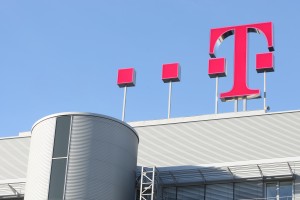Discussions in Germany about how broadband can benefit rural areas
Article
German industry is poised to exploit rural broadband | PC World
My Comments
Other countries are having to work harder to even justify rural broadband but Germany is justifying and standing for a broadband standard of at least 50Mbps even in rural areas. This was something that the German Chancellor Angela Merkel had called for in her opening speech at CEBIt 2015 in Hannover.Here. the goal was about using broadband as a tool to benefit the tradition-driven farming and forestry industries that exist in the country’s rural areas. This is although Germany is pushing the VDSL2 barrow for their next-generation broadband technology but could use “fibre to the remote node” with VDSL2 and ADSL2 to push real broadband to rural households or to serve 4G or newer mobile-broadband service to these areas.
The main benefit was to allow farmers and forestry workers to implement computer-driven analytics rather than tradition and “rough-gauging” to their tasks in order to gain better harvests. SAP were premiering a “field analytics” service which covers the lifecycle of a farmer’s crop, recommending when to start the various tasks associated with that crop. This allows dates for these tasks to be factored in by the farmer or seed merchant. As well, weather reports for that area can be used to vary when to start a particular task.
The SAP service also has the ability for the farmer to share out data with contractors on an “as-needed” basis thus honouring Germany’s strict data-protection laws. At the moment, it is a proof-of-concept service but it was realised that this kind of service can benefit from real broadband being available to rural areas.
Other beneficiaries included Claas who offered a sensor-equipped tractor along with Fovea who offered a surveying app for forestry workers.
Here it is not just about personal entertainment or general office communication that would benefit the rural community when real broadband arrives. It is also about using the “fat pipes” that this technology provides to exchange data with various analytics services to obtain the right crop yield.

![German countryside - By Manfred&Barbara Aulbach (Own work) [CC-BY-SA-3.0 (http://creativecommons.org/licenses/by-sa/3.0) or GFDL (http://www.gnu.org/copyleft/fdl.html)], via Wikimedia Commons](https://homenetworking01.info/wp-content/uploads/2014/08/Feldweg_in_der_Nähe_von_Diemelstadt-300x199.jpg)
![Yorkshire Dales By Kreuzschnabel (Own work) [CC-BY-SA-3.0 (http://creativecommons.org/licenses/by-sa/3.0), GFDL (http://www.gnu.org/copyleft/fdl.html) or FAL], via Wikimedia Commons](https://homenetworking01.info/wp-content/uploads/2014/09/2013_Langthwaite_Arkengarthdale-Yorkshire-Dales-300x225.jpg)


